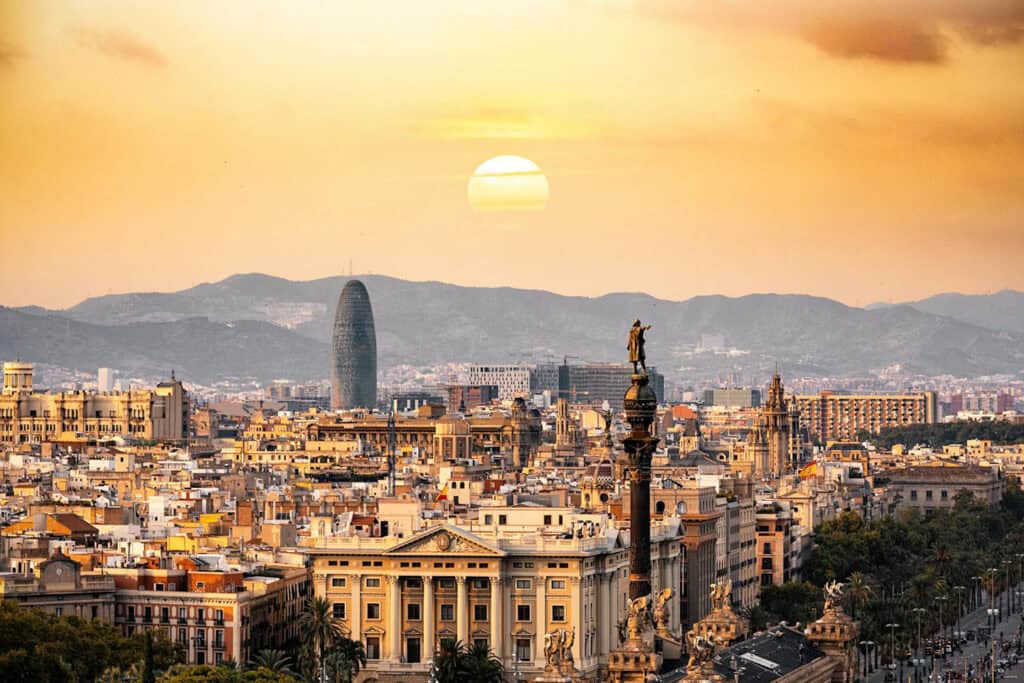
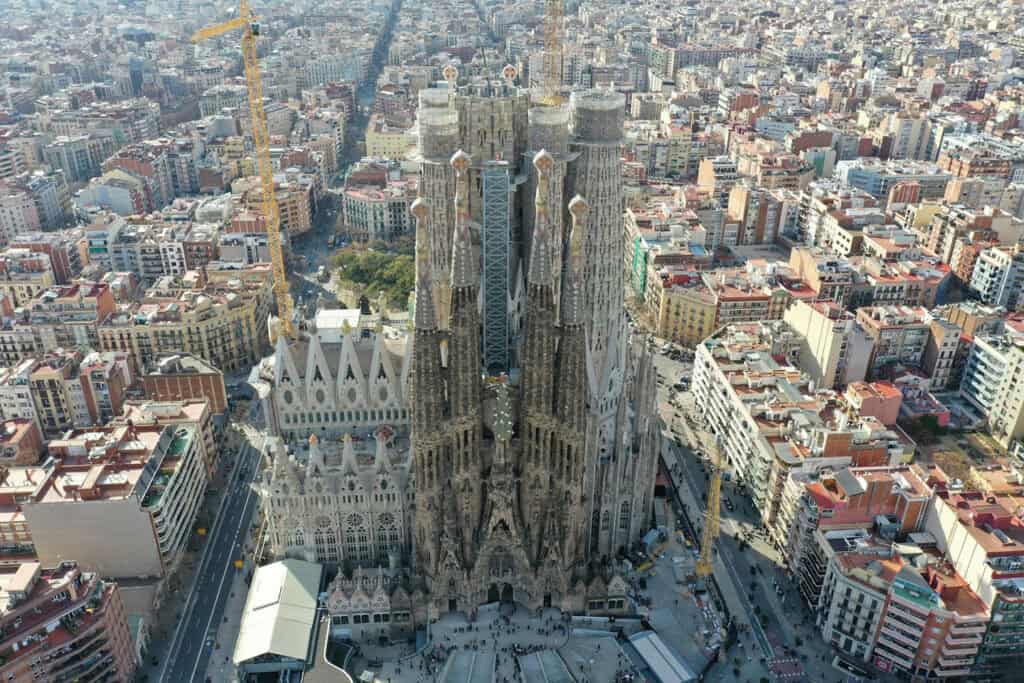
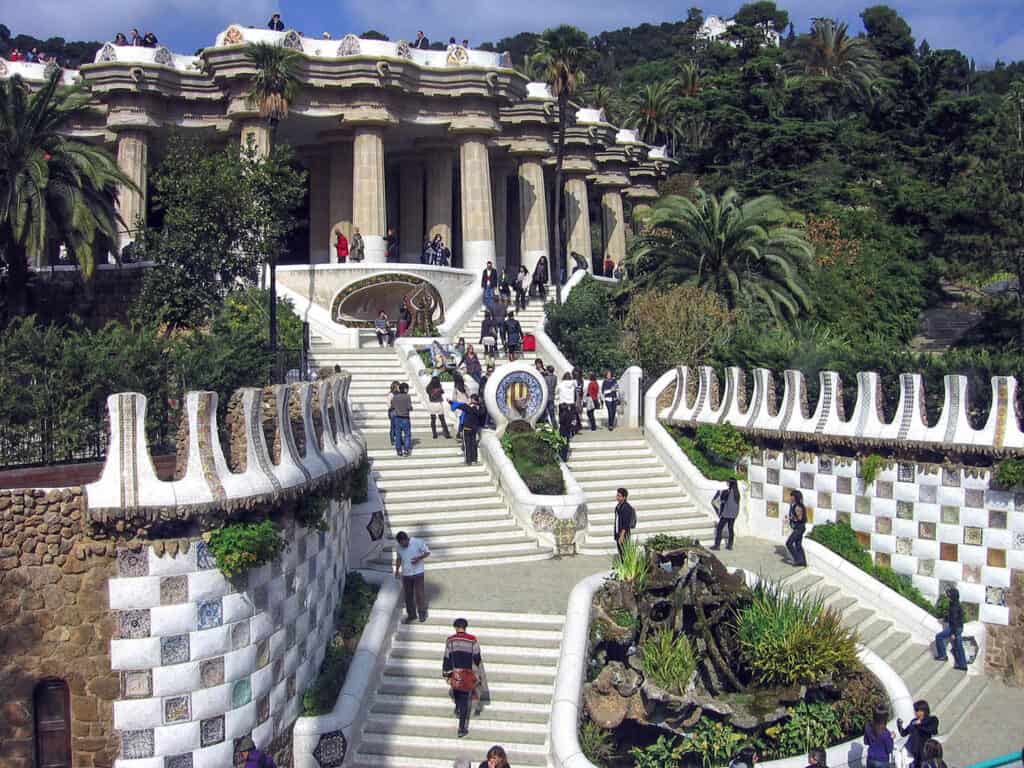
Ever wondered how Barcelona’s architecture tells its story? The city blends Gothic, Modernist, and contemporary styles in a unique way. Understanding these styles can be tricky, but you’re not alone.
At Landmarks Architects, we simplify Barcelona’s architectural journey. With our expertise, we’ll guide you through the city’s diverse styles.
In this article, we will explore:
- The key features of Gothic architecture and its historical role
- The distinct elements of Catalan Modernism and its cultural significance
- The innovative aspects of contemporary architecture and their urban impact
Ready to see how Barcelona’s architecture evolves? Keep reading to discover how these styles combine history with modern design.
1. Gothic Architecture
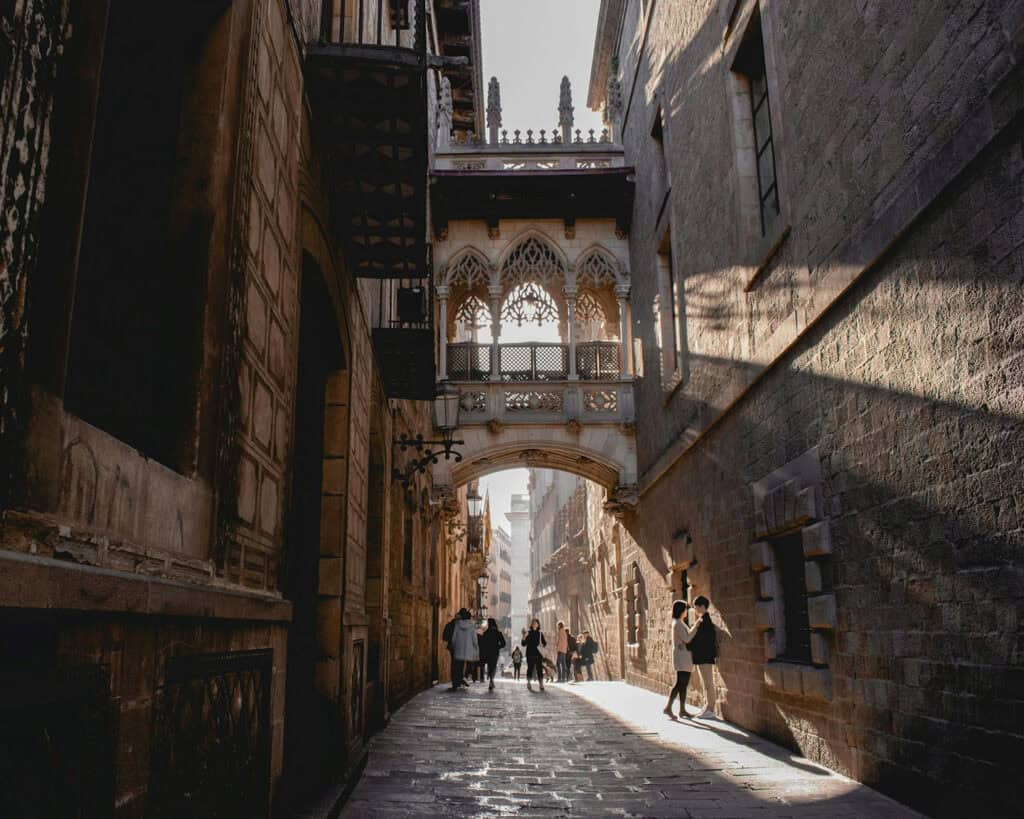
Barcelona has many architectural styles, with Gothic architecture being very important. This style appeared in the late medieval period and is known for its detailed designs. Gothic architecture was prominent in Barcelona from the 13th to the 15th centuries, during a time of growth and wealth in Catalonia.
The style was influenced by both local and European trends, especially from France.
Many Gothic buildings are in Ciutat Vella (the old town). These buildings, like cathedrals and town halls, were built for religious and civic uses. They reflect the city’s cultural and spiritual goals from that time and are key examples of the Types of Architectural Styles found in Barcelona.
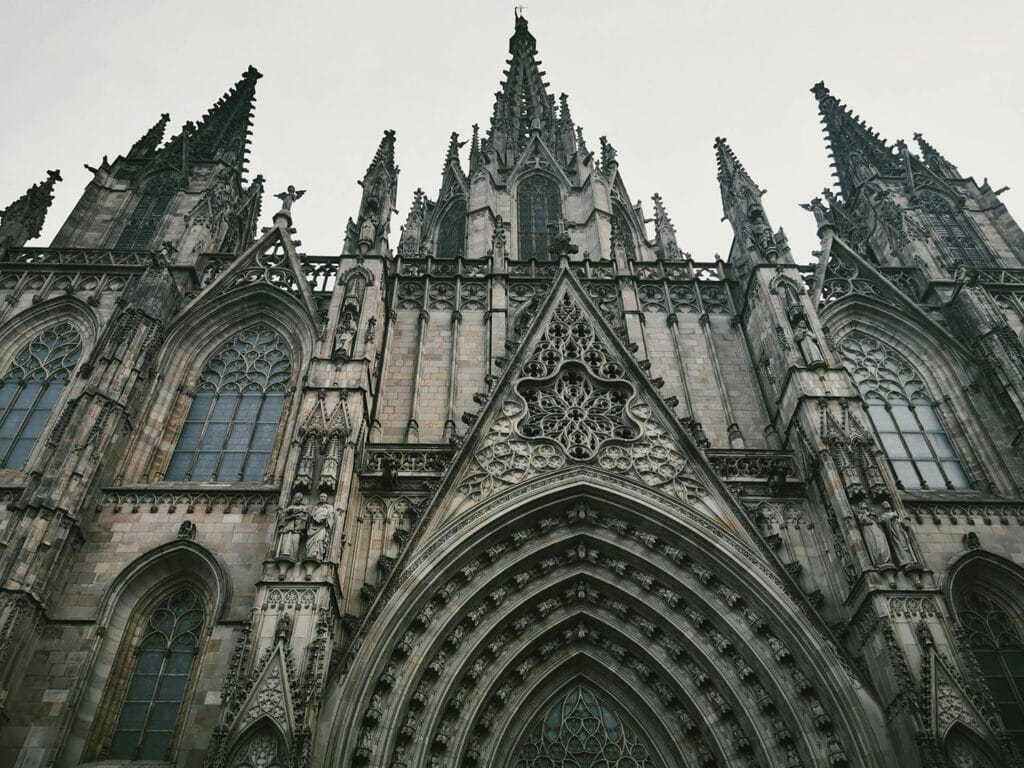
Key Characteristics :
- Pointed Arches: These arch designs allow for greater height and larger windows.
- Ribbed Vaults: Supporting the weight of ceilings, this feature adds depth and dimension.
- Flying Buttresses: These external supports help distribute the weight of the structure.
- Stained Glass Windows: Large windows with colorful glass fill interiors with bright, natural light.
- Ornate Sculptures: Detailed decorations show biblical scenes and figures, adding storytelling to buildings.

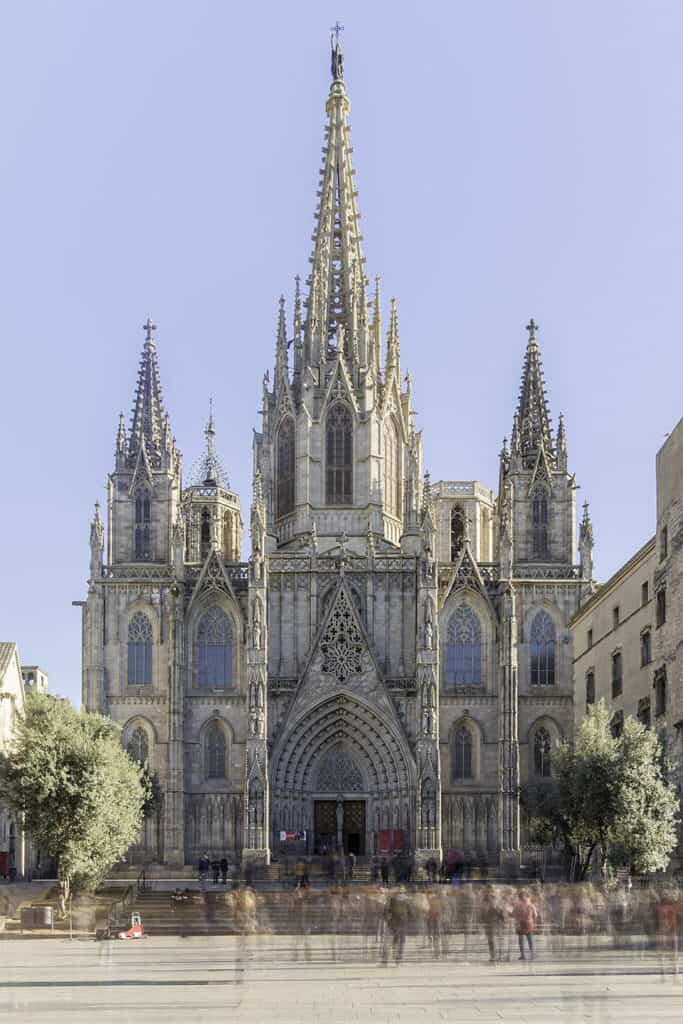
The Barcelona Cathedral, also called La Seu, is a great example of Gothic architecture. It was began in 1298 and was completed in 1420 and has a grand façade with detailed carvings and tall spires. Inside, colorful light shines through beautiful stained glass windows.
Another key Gothic building is the Basilica de Santa Maria del Mar, finished in the 14th century. This church is known for its simple and elegant design. The way it uses light and space shows typical Gothic features, making it a must-see in Barcelona.
2. Modernism Architecture
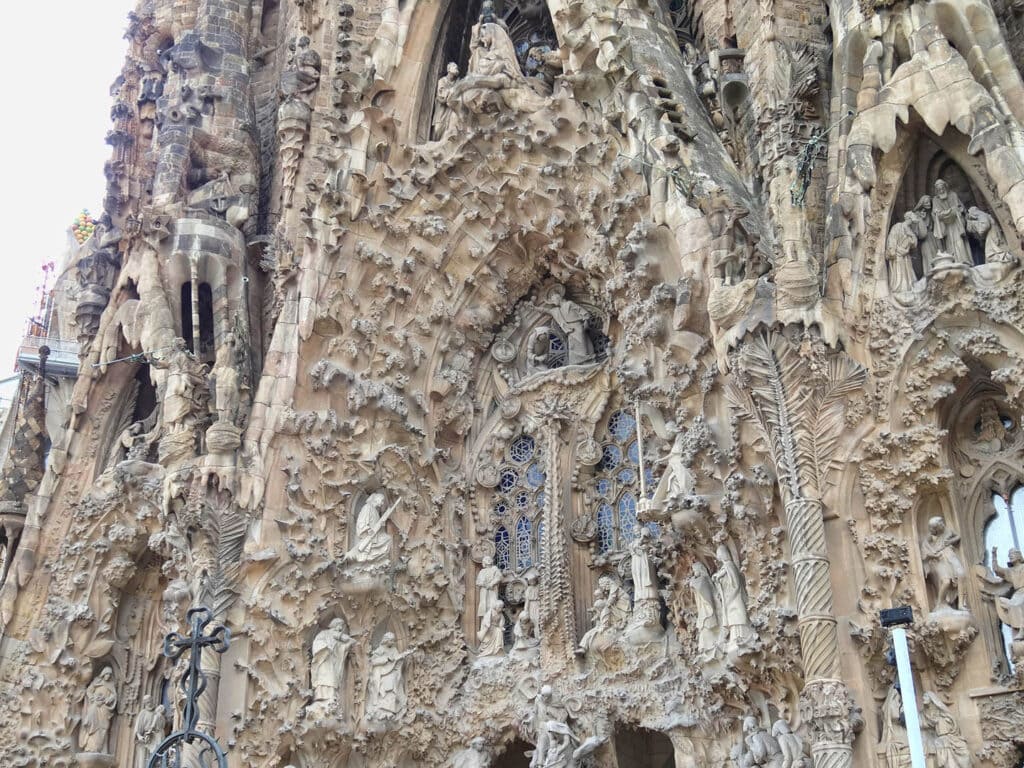
Modernist architecture started in late 19th-century Barcelona. It features flowing shapes and detailed designs inspired by nature. Catalan modernism, also known as Art Nouveau, aimed to create a unique Catalan style. It was a response to industrialization and showed Catalan national identity.
Architects like Antoni Gaudí used this style to build buildings that fit with their surroundings and look different from traditional designs. Their work reflects Catalan art and the region’s unique culture and is an important part of the Famous Architecture in Barcelona.
Key Characteristics
- Organic Shapes: Curved shapes from nature are used, instead of straight lines.
- Natural Forms: Elements like waves and undulating surfaces create a sense of fluidity.
- Mosaic Tiles: Brightly colored ceramic tiles are often used, adding vibrancy and texture.
- Symbolic Ornamentation: Decorative elements convey deeper meanings, often tied to Catalan identity.
- Innovative Techniques: New materials and building methods allow for more creative designs.
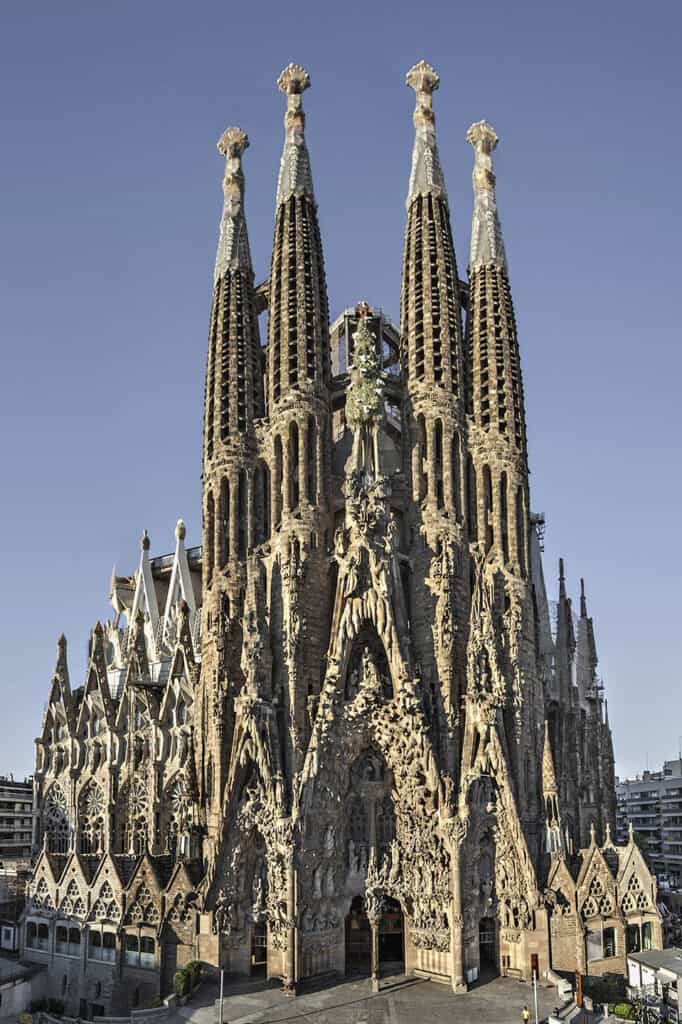
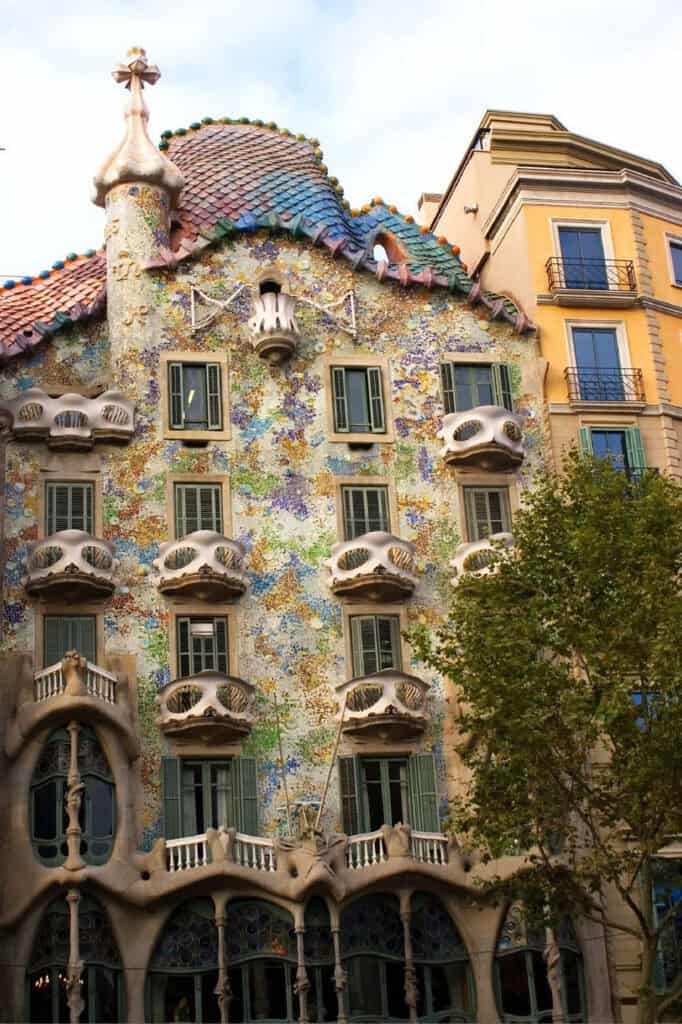
Sagrada Familia: Designed by Antoni Gaudí, this famous church blends Gothic and modern styles. It has curved shapes and detailed fronts inspired by nature.
Casa Batlló: Also by Gaudí, Casa Batlló features a colorful façade with tiles and unique shapes. Its design looks like natural forms and is a good example of modernist architecture.
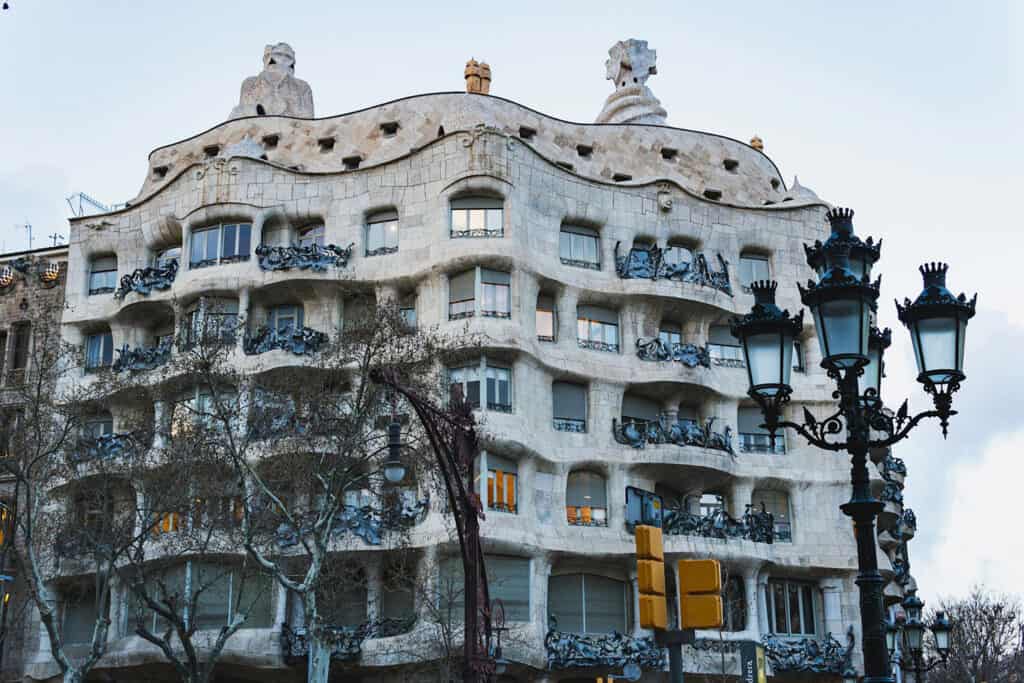
Casa Milà (La Pedrera): Designed by Antoni Gaudí, this building has a wavy stone front and a unique rooftop. Its flowing shapes and creative ironwork show the Catalan Modernism style.
See Also Muslim Architecture in Spain
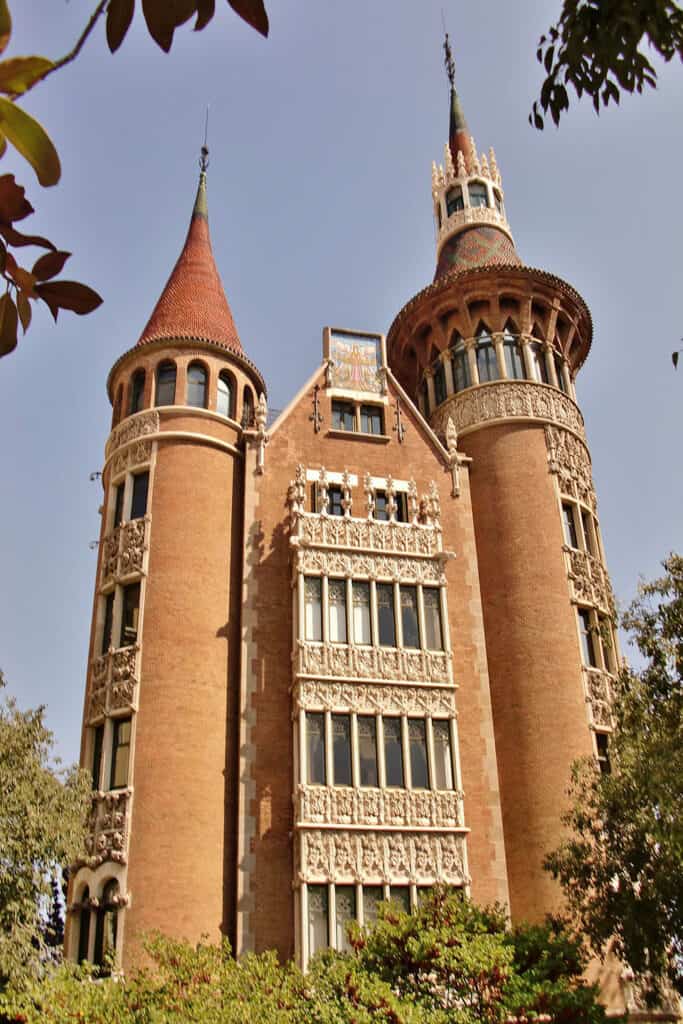
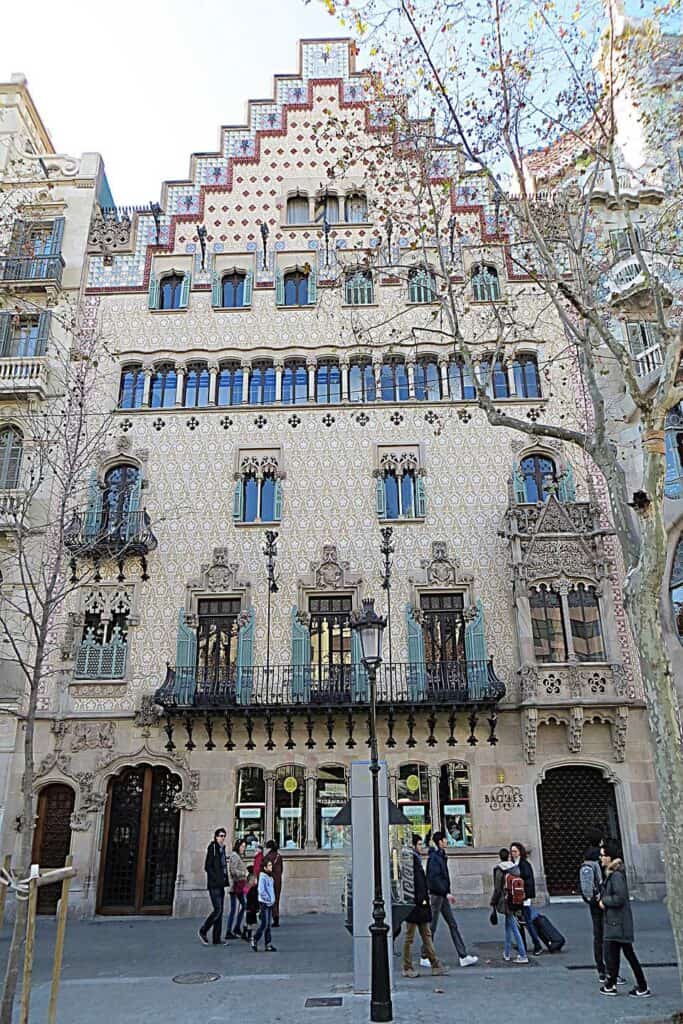
Casa Amatller: Designed by Josep Puig i Cadafalch, this building has a decorated front with medieval and Modernist features. Its detailed stonework and sculptures reflect Catalan Modernism’s artistic style.
Casa de les Punxes: Also by Josep Puig i Cadafalch, this building has tall, pointed towers and fancy decorations. It blends medieval and modernist styles, showing Catalan Modernism’s mix of old and new.
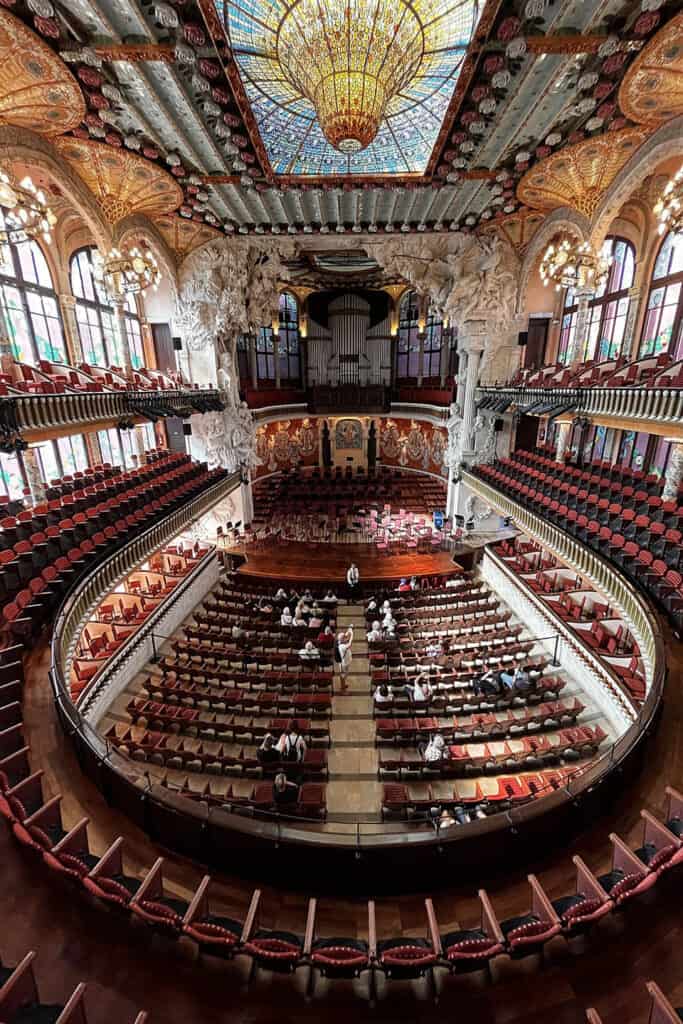
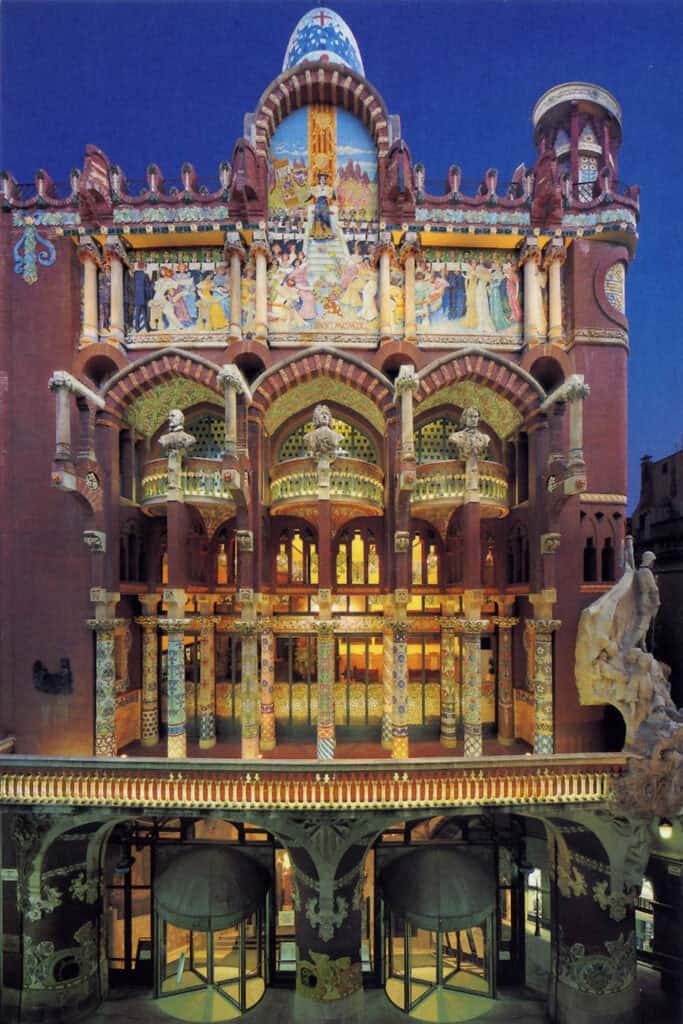
Palau de la Música Catalana: Designed by Lluís Domènech i Montaner, this concert hall has a richly decorated interior with stained glass and colorful mosaics. It shows Catalan Modernism’s focus on detailed and beautiful design.
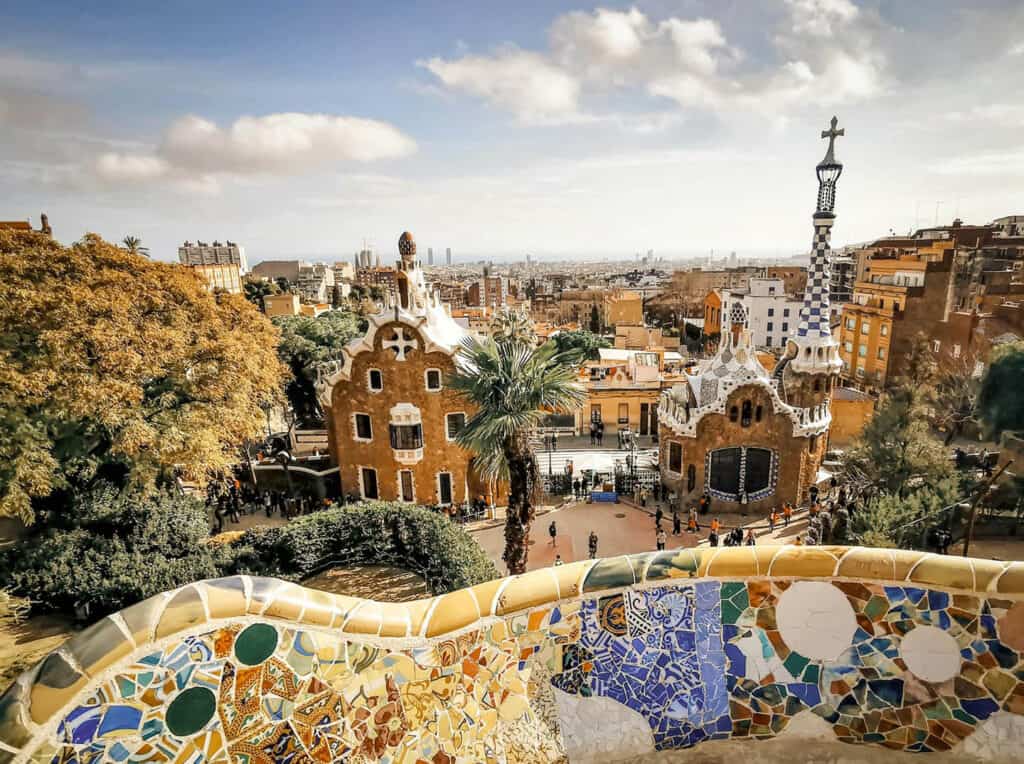
Park Güell: Antoni Gaudí’s design for Park Güell features colorful ceramic tiles and whimsical, nature-inspired forms. Catalan Modernism is evident in the park’s integration of natural elements with architectural design, showcasing the movement’s characteristic use of vibrant colors and organic shapes.
3. Contemporary/Modern Architecture
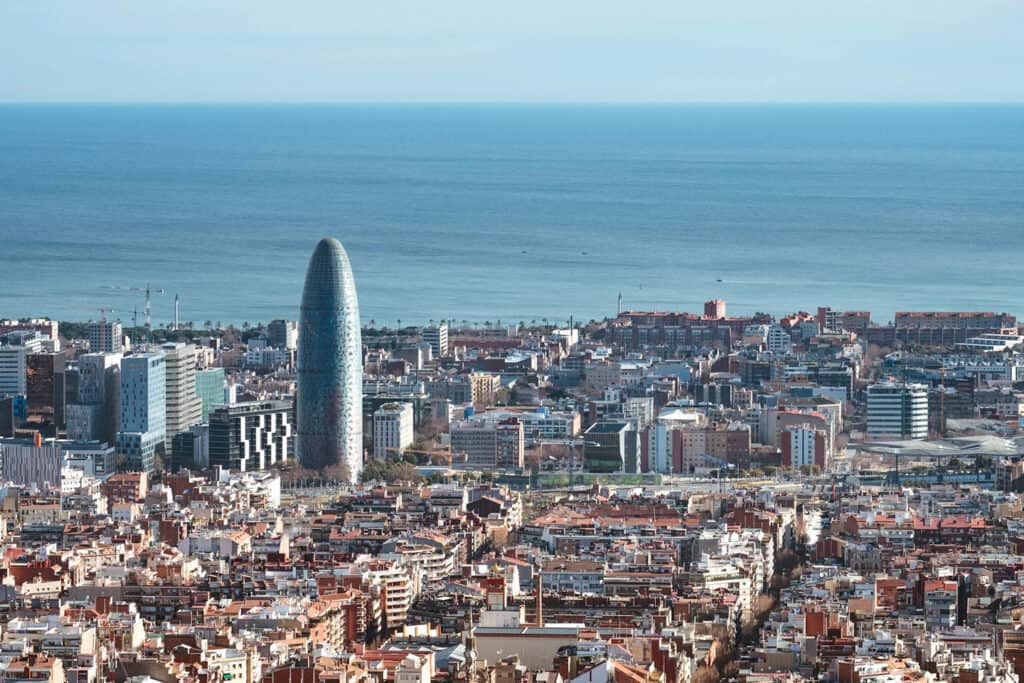
Barcelona’s contemporary architecture combines new designs with eco-friendly ideas. This started in the late 20th century, influenced by global trends and contemporary art. The city updated old areas using Modern Architectural Styles like postmodernism and deconstructivism.
The 1992 Olympic Games brought big changes, turning neglected areas into lively places. Architects like Frank Gehry and Richard Meier contributed by mixing modern buildings with Barcelona’s historic features. Their work shows the city’s evolving architecture and contemporary art.
Key Characteristics
- Ecological Values: Emphasis on sustainability and energy efficiency.
- Natural Forms: Designs often mimic organic shapes and structures found in nature.
- Urban Integration: New buildings enhance the existing urban environment rather than disrupt it.
- Innovative Materials: Glass and steel are used to create open and flexible spaces.
- Public Spaces: Focus on creating accessible urban areas for community engagement.
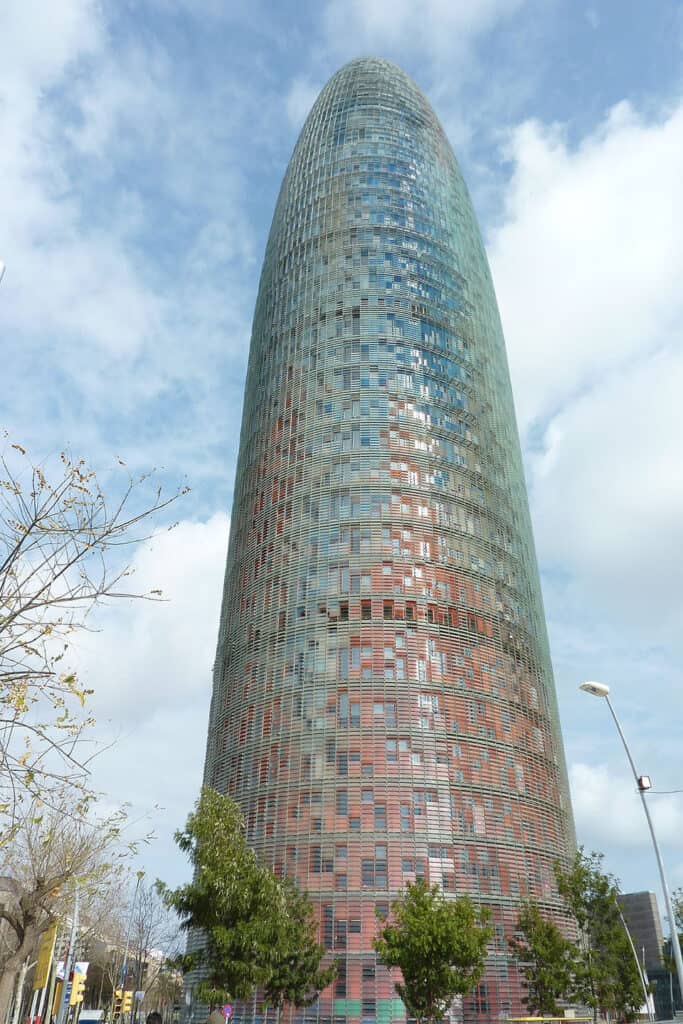
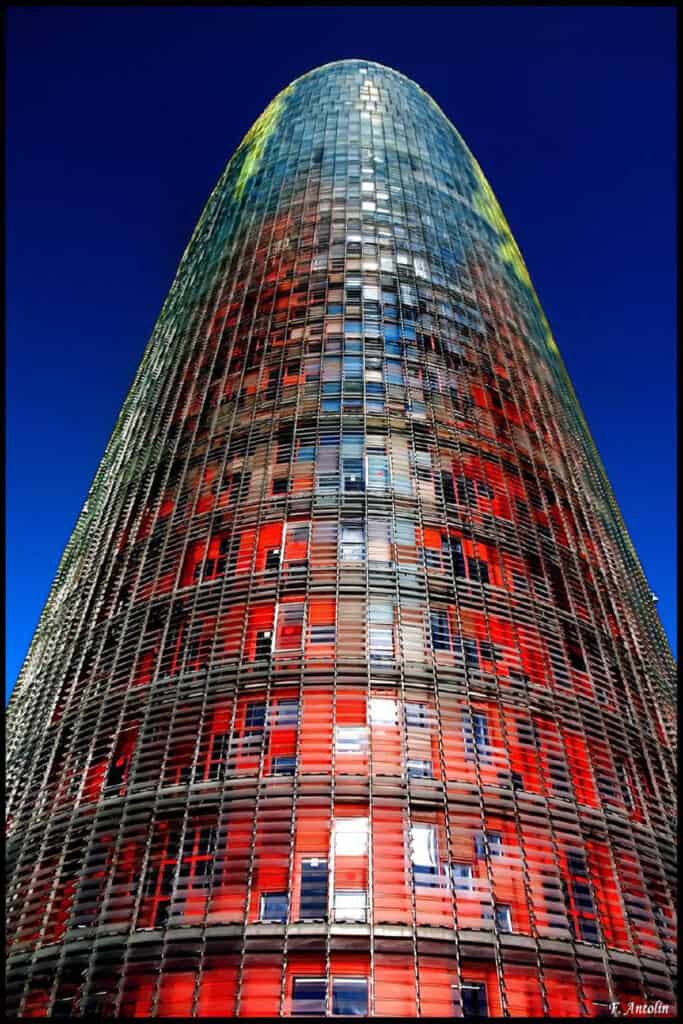

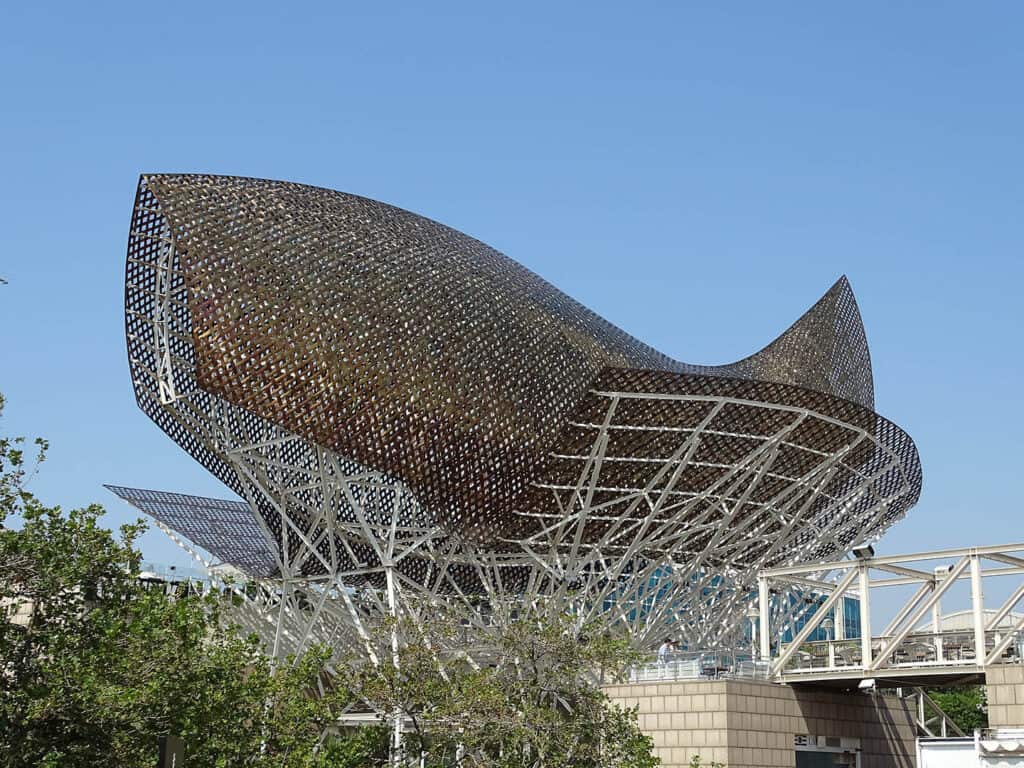
Torre Glòries (formerly Torre Agbar): Designed by Jean Nouvel, this skyscraper has a bullet-shaped form and a colorful, glowing façade. It shows Barcelona’s modern architecture and urban renewal.
Barcelona Pavilion: Designed by Mies van der Rohe for the 1928 Expo, this building is known for its simple and elegant design. It was rebuilt later and provides a calm spot in the busy city.
Frank Gehry’s Fish: Located near Port Olímpic, this landmark has a unique shape and shiny scales. It reflects sunlight and shows Barcelona’s creative approach to modern design.
See Also Tallest Buildings in Spain
What are the Characteristics of Barcelona’s Architecture? A Recap
Barcelona’s skyline shows its rich architectural heritage through different architectural styles. It has Gothic, modern, Renaissance, and modernist designs. Each style tells a story of the city’s architecture in Barcelona, with many of these buildings becoming Architectural Landmarks.
This mix of old and new creates a unique and lively cityscape. Learning about these styles helps you appreciate Barcelona’s architecture and how it keeps evolving.









